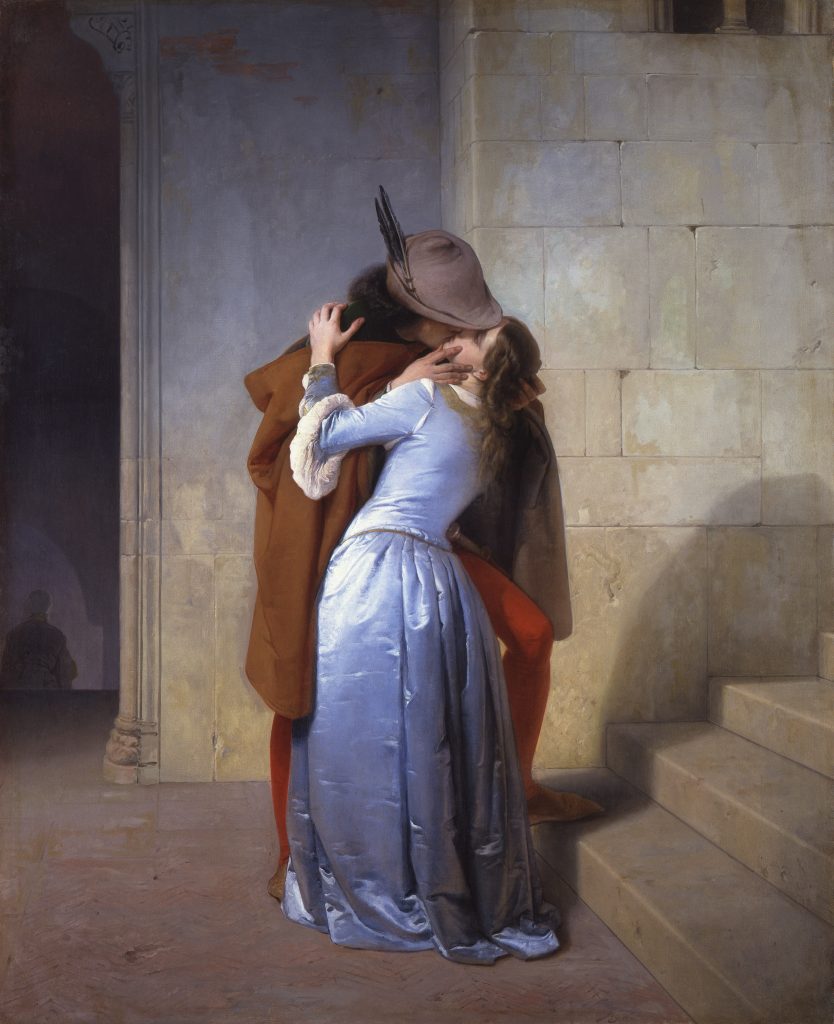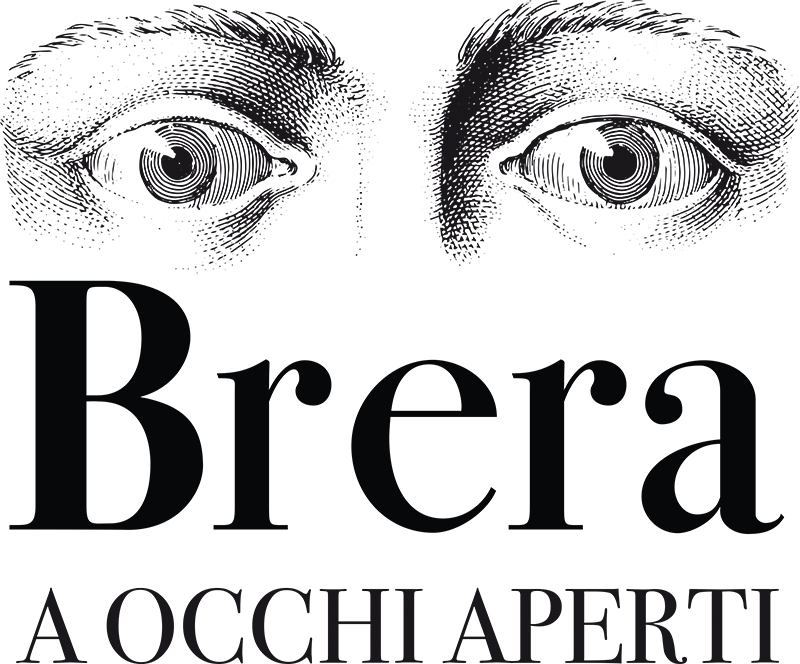FRANCESCO HAYEZ
The Kiss
1859
Oil on canvas
112×88 cm

OPERA
Painted a few months after Victor Emmanuel II and Napoleon III marched into Milan, this canvas represented love for the homeland, as well as the hopes of the newly-born Italian nation emerging from the struggle for its unification and the Second War of Independence. In 1859, viewers flocking to admire Francesco Hayez’s work at the annual exhibition in Brera were thrilled by the audacity of the Kiss.
This painting enjoyed an immediate and extraordinary success because of its patriotic significance and thanks to the Medieval inspiration of the subject, which appealed to the romantic taste of the time. Viewers immediately recognised the message concealed in the colours employed by the artist: the red of the young man’s stockings and the green lining of his cloak paired with the pale blue and white of the woman’s dress evoked the Italian and French flags.
Today it is certainly the most famous and iconic masterpiece in the Pinacoteca di Brera, having first inspired an advert for a well-known brand of chocolates on Saint Valentine’s Day, and subsequently evolved into a variety of new and very successful forms.
BIOGRAFIA
Francesco Hayez (Venice, 1791 – Milan, 1882) was the greatest exponent of the Italian Romantic Movement. Some of his works, such as the famous Kiss, produced in three different versions, are acknowledged symbols of the Unification of Italy. Because of his extremely accurate historical reconstructions, his sentimental inflections, and his political bent, the artist’s relevance is equal to that of Alessandro Manzoni in the field of literature.
Having completed his studies at the Academy of Fine Arts in Venice, he was awarded a scholarship in Rome, where he met the famous Neoclassical sculptor, Antonio Canova. He spent most of his career in Milan, where he moved in 1822 when he was assigned a teaching position at Brera Academy, of which he later became the director. In the Lombard city he was extremely well known as a portrait artist: particularly noteworthy is the painting of the author of The Betrothed, later printed in every Italian schoolbook, in which he was able to capture the writer’s reserved nature thanks to his talent for psychological introspection.

